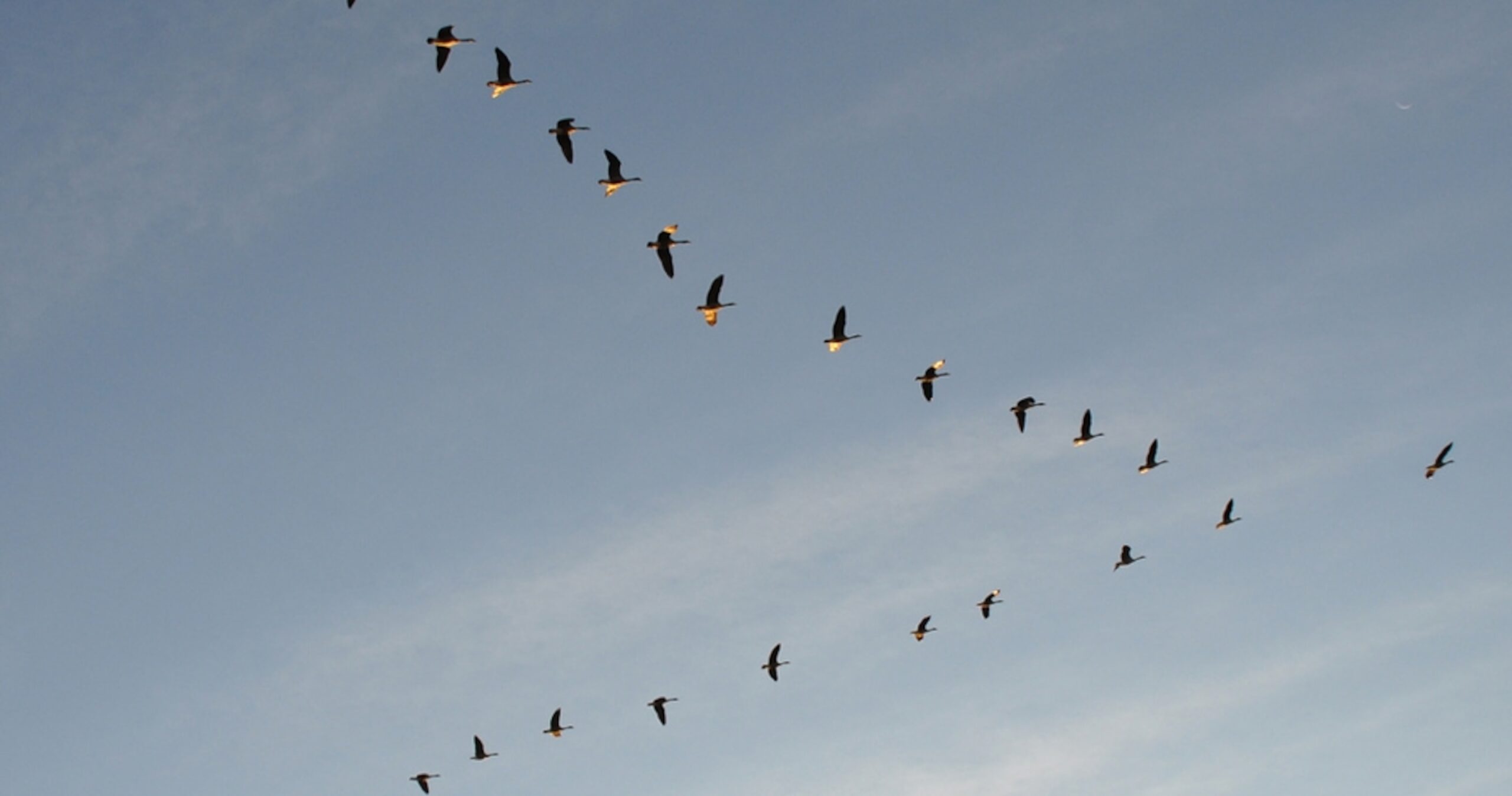You might have often seen birds in the sky flying in a v-formation. Its not just a formation, it turns out that they are actually pulling off something that is more complicated and impressive than one would imagine it to be.
As a bird flaps, a whirlpool of air rolls off each of its wingtips, pushing the air immediately behind it downwards (downwash), and the air behind it and off to the sides gets pushed upwards (upwash). If another bird flies in either of these upwash zones, it gets free lift. It can save energy by cashing in on the air flow created by its flock-mate. This theory was postulated by scientists based on workings of an aeroplane.
In 2001, Henri Weimerskirch of French National Center for Scientific Research and his colleagues fitted pelicans with heart-rate monitors and found that birds at the back of the V had slower heart rates than those in the front, and flapped less often. This confirmed that birds benefit from flying in a V. But it didn’t address why or how they do so.
Later Steven Portugal with his colleagues at the Royal Veterinary College, UK developed tiny data loggers that were light enough to be carried by a flying bird and sensitive enough to record its position, speed and heading, several times a second. But the devices could not emit any information, that is, they had to be retrieved from the birds, to track the recordings.
Johannes Fritz and his team at an Austrian conservation organisation reared some northern bald ibis, an endangered species, and trained them to fly along their old migrations routes by leading the way in a microlight aircraft. The flock stopped at fixed places along the route giving the scientists enough opportunity to fit the birds with loggers, record their wing movement for long stretches and retrieve the data after few hours.
The recordings confirmed the theoretical simulations – the birds fly around a meter behind the bird in front and another meter off to the side. Some ibises preferred to fly on the right of the V, or on the left. Some preferred the centre and others the edges. But on the whole, the birds swapped a lot and there was no constant leader.
But this V formation is not just about being at the right place, its also to do with flapping at the right time. The birds at the back synchronize their wing movement according to the airflow created by the bird in front. “They trace the same path that the bird in front traced through the air,” explains Portugal. What is more, the birds track the good air throughout their flap cycle. If while changing places, a bird finds itself caught in a downwash, it changes the flapping so that it is doing the opposite of what the bird in front is doing. How do they manage? No one knows.
What was also revealed is that ibises are not born with this skill. When they followed the microlight initially, they were allover the place. It took time for them to learn to fly in a V…and they learnt it from each other. It’s almost self taught.



